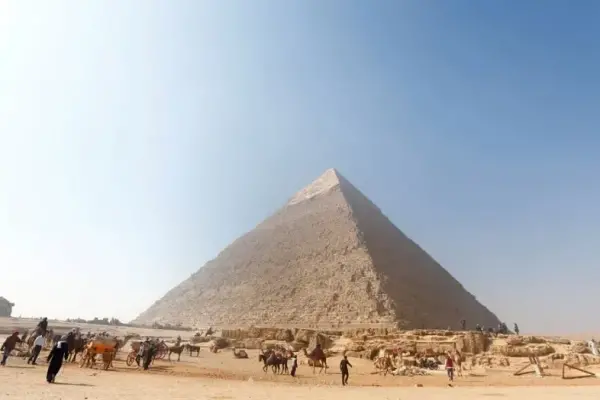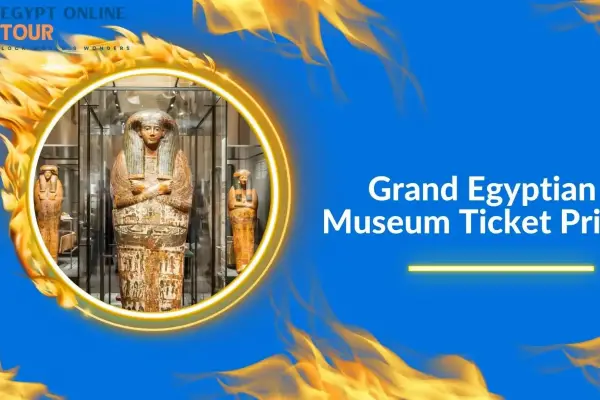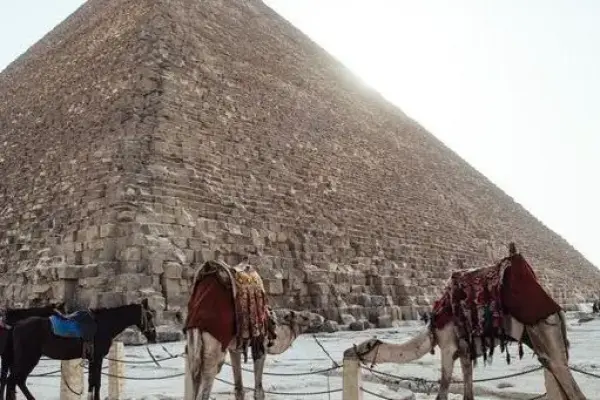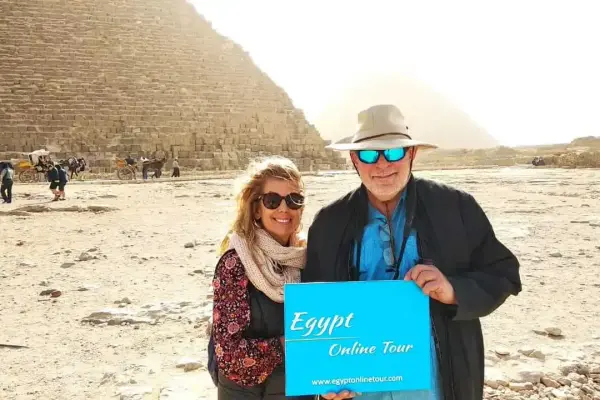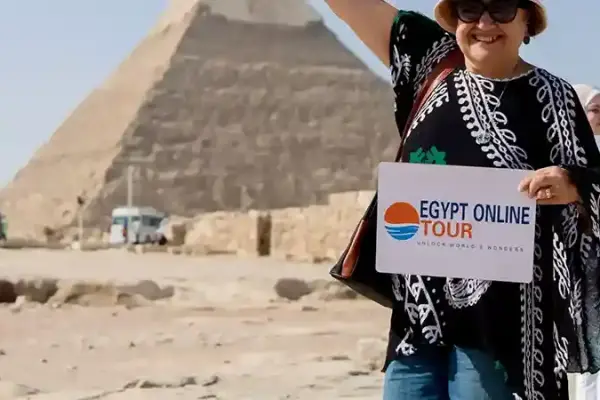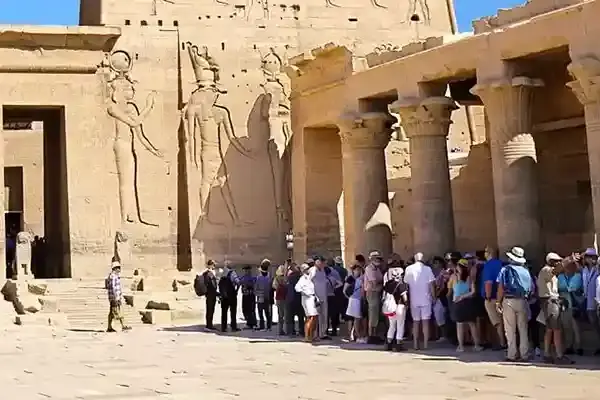10 Surprising Facts About King Tut You Need to Know Today
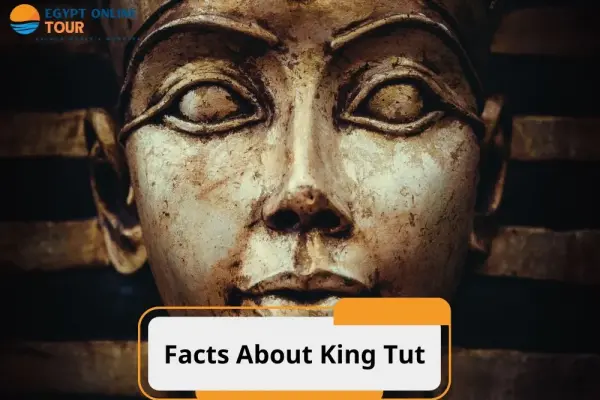
- Feb 16, 2025
- Ancient Egyptian Civilization
- 3,803
Facts About King Tut: Did you know his tomb yielded over 5,000 artifacts? According to the Smithsonian (https://www.si.edu), these treasures offer clear insights into ancient Egypt. Are you ready to uncover 10 surprising facts about King Tut you need to know? Let's explore his brief reign, mysterious death, and lasting legacy together.
Table of contents [Show]
- King Tut’s Birth: The Origins of Egypt’s Famous Boy Pharaoh
- King Tut’s Birth: The Beginning of Egypt’s Youngest Pharaoh
- How Did King Tut Die? The Unsolved Mystery of Egypt’s Young Pharaoh
- When and Where Did King Tut Die? Unraveling the Mystery of Egypt’s Boy Pharaoh
- Fascinating Facts About King Tut: The Boy Pharaoh Who Amazed the World
- How Old Was King Tut When He Died? The Mystery of Egypt’s Young Pharaoh
- King Tut’s Family: The Royal Bloodline That Shaped Ancient Egypt
- Who Succeeded King Tut? The Power Struggle After His Death
- What Was Found Inside King Tut’s Tomb? A Look at Ancient Treasures
- King Tut’s Religion: Restoring Egypt’s Ancient Beliefs
- What Did King Tut Look Like? A Scientific and Historical Reconstruction
- King Tut’s Age: How Old Was Egypt’s Young Pharaoh?
- King Tut’s Treasure: A Glimpse Into Egypt’s Golden Legacy
- King Tutankhamun's Mask: The Golden Icon of Ancient Egypt
- King Tutankhamun’s Legacy: The Boy Pharaoh Who Shaped History
- Summary
- FAQ’s
King Tut’s Birth: The Origins of Egypt’s Famous Boy Pharaoh
King Tutankhamun, known as King Tut, was born during one of ancient Egypt’s most mysterious periods. His early life remains a topic of debate, but historians have gathered key facts about his birth, lineage, and the world he was born into.
1. Estimated Birth Year
He was likely born around 1341 BCE, during the late 18th Dynasty, a time of political and religious shifts.
2. Uncertain Birthplace
Some historians believe he was born in Thebes, while others suggest Akhetaten, the city built by his father.
3. Son of Pharaoh Akhenaten
His father was Akhenaten, the ruler who changed Egypt’s religion to worship Aten, the sun god.
4. Mother’s Identity Remains Debated
His mother was one of Akhenaten's wives, according to DNA studies; she may have been Queen Kiya or the "Younger Lady" mummy discovered in tomb KV35.
5. Originally Named Tutankhaten
His birth name, "Living Image of Aten," reflected his father’s religious devotion to the sun god.
6. Name Change to Tutankhamun
After his father’s death, his name changed to honor Amun, the main god of Egypt’s traditional beliefs.
7. Raised in the Royal Court
He was likely trained in leadership, religious duties, and military strategy from an early age.
8. Born with Health Problems
DNA studies suggest he had a clubfoot and suffered from genetic disorders, which may have affected his mobility.
9. Became Pharaoh as a Child
At around nine years old, he took the throne, making him one of Egypt’s youngest rulers.
10. A Dynasty’s Last Hope
His birth was crucial as Egypt needed a direct heir to secure the royal bloodline.
Facts About King Tut reveal that despite his short reign, his birth and life had a significant impact on Egypt’s history. His legacy still fascinates researchers and history enthusiasts around the world. Consider an 8-day tour of the Pyramids and the Nile by air offered by EgyptOnline Tours.
King Tut’s Birth: The Beginning of Egypt’s Youngest Pharaoh
Tutankhamun, widely known as King Tut, was born during a crucial time in ancient Egypt. His birth remains a topic of interest, as he came from a royal family filled with mystery and power. Below are key details about his early life.
Born Around 1341 BCE: King Tut was likely born during the late 18th Dynasty, a time of religious and political change.
Son of Akhenaten: His father, Pharaoh Akhenaten, introduced monotheism, worshiping only the sun god, Aten.
Mother’s Identity Uncertain: DNA tests suggest his mother was one of Akhenaten’s wives, possibly known as the Younger Lady.
Royal Lineage: He was part of the powerful Amarna period, linked to some of Egypt’s most controversial rulers.
Born in Amarna: He may have been born in Akhetaten (modern-day Amarna), the city built by his father.
A Name That Changed: He was originally named Tutankhaten, meaning Living Image of Aten, before changing it to Tutankhamun.
Likely of Weak Health: Genetic analysis shows he had several health issues from birth, including a clubfoot and possible inherited conditions.
Became Heir as a Child: With Akhenaten’s death, he became next in line despite being very young.
Last Hope for a Dynasty: His birth carried importance, as Egypt’s future depended on a direct royal successor.
Historical Impact: His birth marked the start of a short yet significant reign, influencing Egypt’s return to traditional beliefs.
Facts About King Tut show that his early life influenced his reign, leaving a legacy that still fascinates historians and researchers today. For more incredible historical journeys, explore our Holy Land Tours and discover ancient wonders.
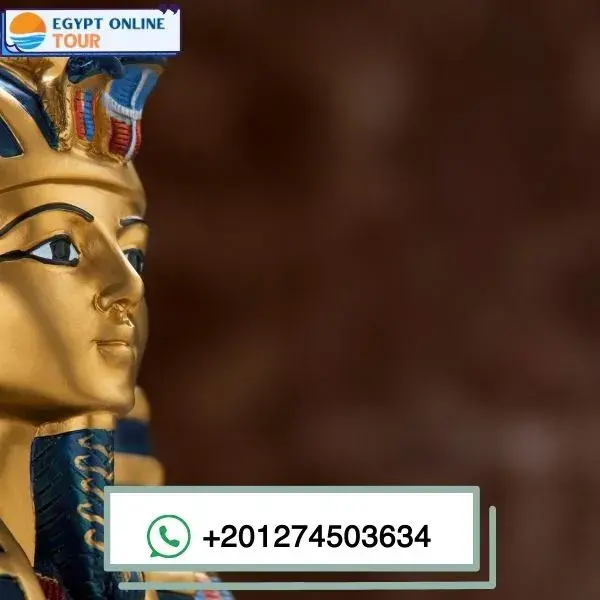
How Did King Tut Die? The Unsolved Mystery of Egypt’s Young Pharaoh
The death of King Tutankhamun remains one of ancient Egypt’s biggest mysteries. He died unexpectedly as a teenager, leaving historians searching for answers. CT scans, DNA tests, and historical evidence have revealed several possible causes. Below are the most debated theories.
Died Around 1323 BCE: He passed away at about 18 or 19, cutting his reign short.
Severe Leg Fracture: His mummy shows a broken thigh bone, possibly from a fall or accident.
Infection Led to Death: Some experts believe an untreated wound caused a fatal infection.
Malaria Complications: DNA tests confirm he had malaria, which may have worsened his health.
Born with Genetic Disorders: Studies suggest he had a clubfoot and bone disease due to royal inbreeding.
Chariot Crash Theory: Some researchers believe he fell from a chariot, leading to life-threatening injuries.
Murder Speculation: Early examinations hinted at a skull injury, but later studies suggest post-burial damage.
Rushed Burial: His tomb was smaller than expected, suggesting his death was sudden and unplanned.
No Clear Cause: Despite advanced research, his exact cause of death remains unknown.
End of a Dynasty: His sudden passing marked a turning point in Egypt’s royal history.
Facts About King Tut reveal that his death remains a subject of fascination for historians, keeping the mystery alive even centuries later. If you're wondering why Egypt is a top destination this year, check out Is Egypt a popular place to visit in 2025? Top 7 Reasons! for more insights.
When and Where Did King Tut Die? Unraveling the Mystery of Egypt’s Boy Pharaoh
King Tutankhamun’s life and death remain among history’s greatest mysteries. He ruled Egypt for a short time before dying young under unclear circumstances. Historians and scientists have gathered key details about when and where he died.
Died Around 1323 BCE
King Tut passed away at approximately 18 or 19 years old, ending his brief reign.
Became Pharaoh at Nine
He ruled for about ten years before his unexpected death.
Likely Died in Thebes
Many believe he died in Thebes, Egypt’s religious and political center.
Buried in the Valley of the Kings
His tomb (KV62) was discovered there in 1922 by archaeologist Howard Carter.
Sudden Death Suspected
His burial chamber was unusually small, suggesting his death was unexpected.
Possible Death Away from the Palace
Some experts think he may have died during a journey.
Mummification Was Rushed
His body showed signs of poor preservation, likely due to hurried funeral preparations.
Buried With Over 5,000 Artifacts
His tomb contained a solid gold mask, chariots, jewelry, and statues.
End of a Dynasty
His death marked the collapse of his royal lineage, leading to power struggles in Egypt.
Still a Mystery
Despite modern studies, the exact circumstances of his death remain unknown.
Facts About King Tut show that his life and early death still captivate historians, driving research and speculation about one of Egypt’s most well-known rulers.
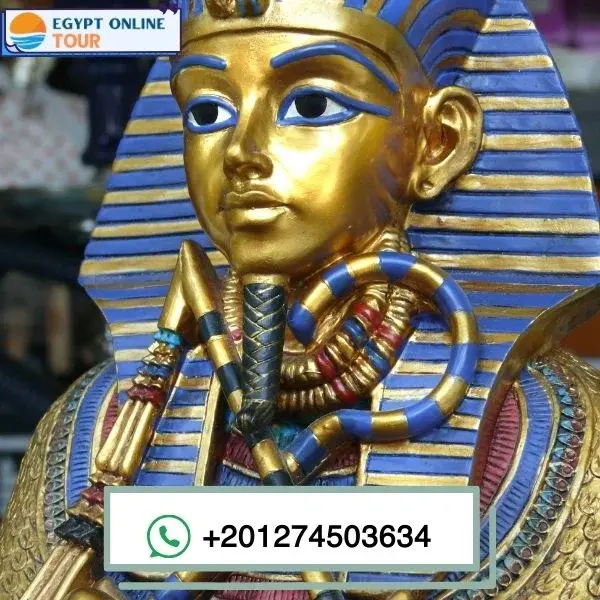
Fascinating Facts About King Tut: The Boy Pharaoh Who Amazed the World
King Tutankhamun remains one of history’s most famous rulers. His tomb, found in 1922, revealed treasures that reshaped our view of ancient Egypt. Below are some key facts about King Tut that continue to intrigue historians and enthusiasts alike.
He became pharaoh at just nine years old and ruled Egypt for about ten years.
His full name, Tutankhamun, means “Living Image of Amun,” the chief god of Egypt at the time.
DNA tests suggest he had malaria and a clubfoot, which may have made walking difficult.
He wed Ankhesenamun, his half-sister, but they didn't have any living kids.
His tomb was discovered by British archaeologist Howard Carter in 1922 in the Valley of the Kings.
The burial chamber contained over 5,000 artifacts, including a solid gold coffin and a famous golden mask.
Unlike other pharaohs, his tomb was smaller and less elaborate, likely due to his sudden death.
Some theories suggest he died from an infection caused by a broken leg. Others believe genetic diseases play a role.
His tomb’s discovery fueled the myth of the “Curse of the Pharaohs” after some involved died under mysterious circumstances.
King Tut’s treasures are now displayed in museums, drawing millions of visitors each year.
His short reign left a lasting impact, making him one of ancient Egypt’s most studied figures. Discover the three major achievements of ancient Egypt that shaped history and continue to inspire the world.
How Old Was King Tut When He Died? The Mystery of Egypt’s Young Pharaoh
King Tutankhamun, often simply called King Tut, was a young pharaoh when he died. While the exact age is uncertain, experts estimate he was in his late teens or early twenties around 1323 BCE, at approximately 18 or 19 years old. He became pharaoh at just nine years old and ruled for about a decade. His sudden death remains a mystery, with theories suggesting illness, infection, or injury. His small tomb size hints at an unexpected passing. DNA tests confirm he had malaria and genetic disorders, which may have weakened his health. Despite modern research, the exact cause of death is still debated. His life and death continue to fascinate historians, making him one of the most studied figures in ancient history.
King Tut’s Family: The Royal Bloodline That Shaped Ancient Egypt
King Tutankhamun belonged to a family that played a crucial role in Egypt’s history. His lineage was marked by religious shifts, power struggles, and deep mysteries. Modern DNA studies have provided key insights into his parents, wife, and ancestors.
Father: Pharaoh Akhenaten
His father, Akhenaten, ruled Egypt and introduced the worship of Aten, the sun god.
This religious shift led to a controversial period that Tut later worked to reverse.
Mother’s Identity: The Younger Lady
DNA testing confirms his mother was the "Younger Lady", a mummy found in tomb KV35.
Some believe she was Queen Kiya, while others suggest she was Nefertiti, Akhenaten’s famous wife.
Marriage to Ankhesenamun
King Tut married Ankhesenamun, his half-sister and the daughter of Akhenaten and Nefertiti.
Their marriage aimed to preserve the royal bloodline and stabilize power.
No Surviving Heirs
His tomb contained two mummified infants, believed to be his stillborn daughters.
With no heirs, his early death led to a royal succession crisis.
Grandfather: Amenhotep III
He was the grandson of Amenhotep III, one of Egypt’s most powerful and wealthy rulers.
His grandfather’s reign was a time of great prosperity and expansion.
The Amarna Period and Religious Upheaval
His family ruled during the Amarna Period, a time of radical religious and artistic transformation.
Akhenaten’s changes disrupted traditional beliefs, which Tut worked to restore.
Health Issues Linked to Royal Inbreeding
DNA studies show King Tut suffered from genetic disorders due to inbreeding.
He had a clubfoot and other health conditions that may have affected his ability to walk.
End of His Dynasty
His sudden death triggered a power struggle, leading to the fall of his royal bloodline.
His successors attempted to erase his family’s controversial religious legacy.
Ongoing Research and Historical Debate
Despite modern research, many details about his family remain unclear.
Discoveries continue to unravel the mysteries of one of history’s most fascinating dynasties.
King Tut’s family left a lasting impact on ancient Egypt, shaping its history in ways that still intrigue researchers today.
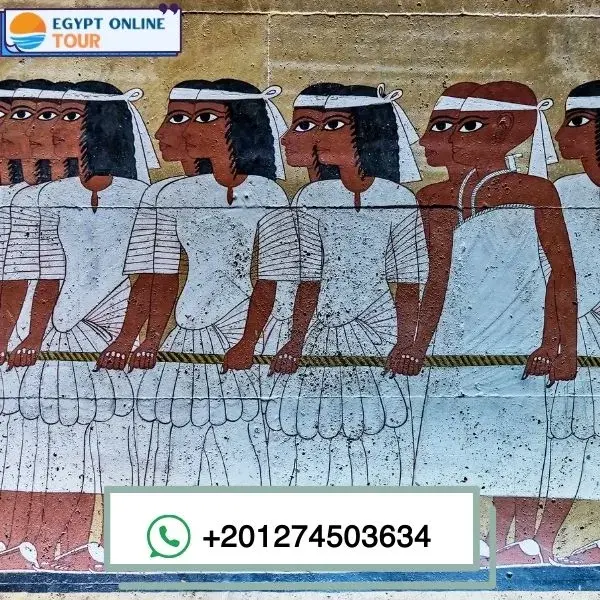
Who Succeeded King Tut? The Power Struggle After His Death
King Tutankhamun’s death in 1323 BCE left Egypt without a clear heir, leading to a political shift. Since Tut had no surviving children, power passed to Ay, a high-ranking court official and trusted advisor.
Ay Takes the Throne
Ay became Pharaoh and ruled Egypt for about four years after Tut’s passing.
To strengthen his position, he married Ankhesenamun, King Tut’s widow.
A Short and Unstable Reign
His rule was brief and lacked strong support, making him a transitional leader.
He failed to establish a lasting dynasty, leaving Egypt’s future uncertain.
Horemheb Seizes Power
After Ay’s death, Horemheb, a military general, took control.
Horemheb sought to erase Ay and King Tut from historical records to restore traditional rule.
A Legacy That Remains
Despite attempts to remove him from history, facts about King Tut still captivate historians.
His death changed Egypt’s leadership, marking the end of the Amarna Period.
King Tut’s passing not only ended his reign but also triggered a power struggle that reshaped Egypt’s future.
What Was Found Inside King Tut’s Tomb? A Look at Ancient Treasures
Discovered in 1922 by Howard Carter, King Tutankhamun’s tomb is one of the most significant archaeological finds in history. Though smaller than other royal tombs, it contained thousands of treasures that revealed the richness of ancient Egyptian life, beliefs, and burial customs. Every artifact offered a glimpse into the young pharaoh’s reign, preserving his story for generations.
Golden Coffins and Sarcophagus
Three nested coffins protected his mummy, with the innermost made of solid gold.
His body was placed inside a quartzite sarcophagus, adorned with gold and gemstones.
The famous golden mask, weighing over 10 kilograms, covered his face.
It was crafted from solid gold, inlaid with lapis lazuli, quartz, and obsidian.
Chariots and Weapons
Several chariots, possibly used in ceremonies or battle, were found inside.
A collection of daggers, swords, bows, and shields was discovered near his body.
Jewelry and Amulets
Over 100 pieces of jewelry, including rings, necklaces, and bracelets, were found.
Protective amulets were placed with his mummy to ensure a safe journey to the afterlife.
Royal Furniture and Thrones
A gilded throne, decorated with gold, silver, and gemstones, was inside.
Luxurious beds, chairs, and storage chests were included for his use in the next world.
Canopic Jars and Burial Goods
Four alabaster canopic jars held his mummified internal organs.
Supplies like food, wine, perfumes, and clothing were placed for his afterlife journey.
Sacred Statues and Figurines
Life-sized statues of King Tut and Egyptian gods stood as tomb guardians.
Shabti dolls, meant to serve him in the afterlife, were placed alongside other offerings.
The Curse of the Pharaohs?
Mysterious deaths followed the tomb’s opening, fueling the legend of an ancient curse.
This myth continues to intrigue history lovers and adds to the fascination with King Tut’s tomb.
A Discovery That Changed History
Despite looting in ancient times, most of the tomb’s treasures remained intact.
The find reshaped Egyptology, revealing the secrets of royal burial customs.
Facts about King Tut still captivate historians, archaeologists, and travelers worldwide.
King Tut’s tomb remains a time capsule of Egypt’s golden age. If you're eager to witness the wonders of ancient Egypt, plan your visit with Egypt Online Tours and explore the treasures of the past firsthand. For more details on planning your trip, check out the Cheapest Time to Go to Egypt guide by EgyptOnline Tours.

King Tut’s Religion: Restoring Egypt’s Ancient Beliefs
King Tutankhamun ruled during a time of major religious change. His father, Akhenaten, had introduced a new form of worship, replacing Egypt’s traditional gods with the singular devotion to Aten, the sun god. After Akhenaten’s death, Tutankhamun reversed these changes and brought back Egypt’s old deities. His reign marked the revival of Amun as the chief god and the restoration of long-held spiritual traditions.
Reinstating Traditional Egyptian Worship
Tutankhaten was King Tut's original name, which translates to "Living Image of Aten."
He later changed his name to Tutankhamun, honoring Amun, the traditional god of Thebes.
Temples and priesthoods dedicated to Amun and other gods were restored.
The royal capital was moved from Akhetaten (Amarna) back to Thebes, the religious center.
Festivals and public rituals honoring Egypt’s gods were reinstated.
Rejecting Akhenaten’s Religious Reforms
Akhenaten had banned the worship of all gods except Aten.
King Tut’s government removed Akhenaten’s name from monuments and temples.
Temples that had been shut down were reopened for public worship.
The Role of Priests in King Tut’s Reign
The Amun priesthood regained power, influencing government decisions.
High priests helped restore Egypt’s religious structure and traditions.
Royal decrees reaffirmed polytheism, securing the return of multiple gods. For a comprehensive adventure, explore the 12-Day Pyramids, Nile, and Sinai Tour by EgyptOnline Tours.
The Lasting Impact of His Religious Policies
His efforts ended a controversial period in Egypt’s history.
Despite his short reign, his restoration of Amun shaped Egypt for generations.
Facts about King Tut’s role in reviving Egypt’s faith continue to fascinate historians.
King Tut’s reign brought religious stability back to Egypt, ensuring that the traditional gods were worshipped once more. His policies reversed his father’s radical changes and restored balance to Egypt’s spiritual and political life.
What Did King Tut Look Like? A Scientific and Historical Reconstruction
King Tutankhamun, Egypt’s legendary boy pharaoh, has fascinated historians and researchers for decades. His golden mask presents an idealized image, but modern science has provided a clearer picture of his true appearance. CT scans, DNA analysis, and ancient artwork reveal key details about his physical traits and health.
Scientific Findings: A Look Beneath the Wrappings
Slender Build – CT scans show he had a lean body, standing about 5 feet 6 inches (167 cm) tall.
Elongated Skull – His skull shape suggests a hereditary trait from his royal lineage.
Facial Features – He had a narrow face, a slight overbite, and a prominent jawline, similar to other rulers of his dynasty.
Dark Skin Tone – Based on historical evidence, he likely had a complexion similar to other ancient Egyptians.
Clubfoot Condition – DNA studies confirm he had a deformed foot, which may have caused mobility issues.
Walking Sticks Found in His Tomb – Over 100 walking sticks were discovered, indicating he may have relied on them due to his foot condition.
Genetic Disorders – Inbreeding within the royal family led to health complications, possibly making him physically frail.
Malaria Infections – Traces of malaria were found in his body, suggesting he suffered from recurring illness.
Artistic Depictions: The Symbolic Image of a Pharaoh
Tomb Paintings Show a Strong, Youthful King – Many portrayals depict him as a powerful ruler.
His Golden Mask Represents an Idealized Version – Egyptian art often presented pharaohs in a perfected form.
Some Statues Show Feminine Features – Certain artworks emphasize divine qualities rather than realistic physical traits.
The Mystery of His True Face
Scientific reconstructions offer the most accurate depiction, but soft tissues remain uncertain.
Ancient Egyptian art served a symbolic purpose rather than capturing a true likeness.
His real face may never be fully known, adding to his lasting intrigue.
A Legacy That Lives On
King Tutankhamun’s reconstructed image blends scientific discoveries with historical artistry. Though his reign was short, facts about King Tut continue to captivate historians, making him one of the most studied pharaohs in history. Consider this Grand Egyptian Museum tour by EgyptOnline Tours.
King Tut’s Age: How Old Was Egypt’s Young Pharaoh?
King Tutankhamun became pharaoh at just nine years old, making him one of the youngest rulers in Egyptian history. His reign lasted about ten years, but his life ended unexpectedly. He died around 18 or 19 years old in 1323 BCE, leaving behind many unanswered questions.
The cause of his death remains uncertain, with theories suggesting genetic disorders, infections, or a fatal accident. DNA tests reveal he suffered from health issues, likely due to royal inbreeding. His early death changed Egypt’s leadership and left behind one of history’s greatest mysteries. Facts about King Tut continue to intrigue researchers, keeping his story alive centuries later.
King Tut’s Treasure: A Glimpse Into Egypt’s Golden Legacy
The discovery of King Tutankhamun’s tomb in 1922 was one of the greatest archaeological finds in history. Unlike many royal tombs, it remained nearly intact, preserving a vast collection of artifacts that revealed deep insights into ancient Egyptian life, religion, and artistry. More than 5,000 objects were found, including golden coffins, weapons, jewelry, and sacred statues. These treasures reflected his royal status, spiritual beliefs, and the grandeur of Egypt’s 18th Dynasty. Facts about King Tut and his remarkable burial goods continue to fascinate historians, keeping his legacy alive. For a comprehensive experience, Consider an 8-day tour of the Pyramids and the Nile by air offered by EgyptOnline Tours.
Treasures Found in King Tut’s Tomb
The Golden Death Mask Made of solid gold, this legendary mask covered his face, symbolizing his divine power.
Nested Coffins and Sarcophagus: Three beautifully decorated coffins held his mummy, with the innermost crafted from pure gold.
Chariots and Weapons: The tomb contained six gold-plated chariots, daggers, bows, and shields, possibly used for battle and rituals.
Jewelry and Amulets: Over 100 pieces of jewelry, including necklaces, rings, and bracelets, carried religious significance.
Throne and Furniture: A gilded throne, adorned with gold, silver, and gemstones, depicted a scene of King Tut with his wife.
Canopic Jars and Burial Goods: Alabaster jars held his mummified organs, while food, perfumes, and clothing were placed for his afterlife.
Sacred Statues and Figurines: Life-sized statues of gods, shabti dolls, and sacred symbols ensured his protection in eternity.
Board games and daily objects: The tomb included game boards, sandals, and writing tools, reflecting his royal lifestyle.
The Significance of His Treasures
Historical Value: These artifacts glimpse ancient Egyptian culture, technology, and royal traditions.
Religious Importance: Many items were meant to ensure his safe journey into the afterlife, showcasing deep spiritual beliefs.
Artistic Mastery: The craftsmanship of goldsmiths, sculptors, and painters is evident in every detail of these treasures.
A Discovery That Changed History
King Tut’s tomb remains one of the most significant discoveries in archaeology. Facts About King Tut continue to spark interest, offering valuable insights into ancient Egypt.
The treasures reshaped our understanding of ancient Egyptian burial practices, religious rituals, and artistic achievements. A century later, they continue to captivate researchers, ensuring the story of Egypt’s boy king lives on. For a complete experience, Consider this 10-day round-trip Nile cruise and Pyramids tour by Egypt Online Tours.
King Tutankhamun's golden mask remains one of the most recognized artifacts from ancient Egypt. Found in 1922 by Howard Carter, it showcases remarkable craftsmanship and represents the young pharaoh’s divine status. Facts About King Tut highlight why this mask continues to captivate historians and visitors worldwide.
Solid Gold and Exquisite Detail: The mask is made of solid gold and weighs around 10 kilograms (22 pounds). It's intricately decorated with semi-precious stones and colored glass, showcasing the skill of ancient Egyptian artisans.
A Serene Expression: The mask depicts King Tut with a serene, almost lifelike expression. His eyes are inlaid with obsidian and quartz, giving them a captivating gaze.
Symbols of Power: The mask's blue-striped headdress symbolizes royalty and divine authority. A cobra and vulture are depicted on his forehead, representing protection and kingship.
Prayers for the Afterlife: Hieroglyphic inscriptions on the back of the mask contain prayers and spells to guide Tutankhamun on his journey to the afterlife.
A Window into the Past: The mask provides invaluable insights into ancient Egyptian beliefs about death, the afterlife, and the importance of pharaohs. It also showcases their artistic skill and mastery of goldsmithing.
An Enduring Legacy: King Tutankhamun's mask remains an iconic symbol of ancient Egypt, captivating visitors and historians alike. It's a testament to the enduring power of art and the legacy of a young pharaoh.
If you're planning something special, consider the 2027 Solar Eclipse Tours Packages for a once-in-a-lifetime experience in Egypt.
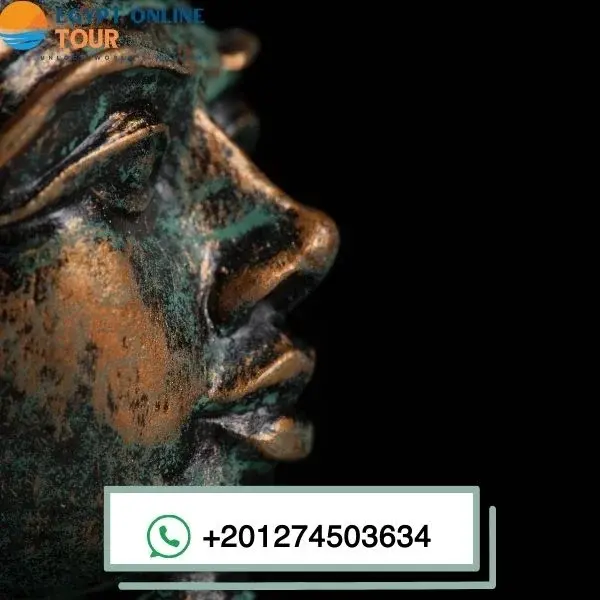
King Tutankhamun’s Legacy: The Boy Pharaoh Who Shaped History
King Tutankhamun became pharaoh at just nine years old and ruled Egypt during a time of change. Though his reign was brief, his impact remains one of the most significant in history. The discovery of his nearly intact tomb in 1922 provided a rare glimpse into ancient Egyptian life, religion, and art. Facts About King Tut show that his story continues to captivate the world, shaping our understanding of this fascinating civilization.
Religious Transformation
Reversed his father Akhenaten’s religious reforms and reinstated the worship of Amun.
Moved the capital back to Thebes, restoring Egypt’s religious and political traditions.
Ordered the rebuilding of temples and religious structures abandoned during Akhenaten’s rule.
Changed his name from Tutankhaten to Tutankhamun to honor Amun.
Political and Cultural Influence
Re-established diplomatic relations with the Mitanni kingdom.
Led military campaigns in Nubia and the Near East to secure Egypt’s borders.
Restored Egypt’s traditional governance after a period of disruption.
His reign marked the return of stability and cultural continuity.
The Discovery of His Tomb
Howard Carter discovered his tomb in 1922, one of the greatest finds in archaeology.
Unlike other royal tombs, his was nearly untouched, preserving over 5,000 artifacts.
His golden mask, chariots, jewelry, and weapons showcased the grandeur of ancient Egypt.
The tomb provided critical insights into burial customs and royal life.
Artistic and Scientific Legacy
His golden mask became one of the most recognized artifacts in history.
The craftsmanship of his treasures highlighted the skills of ancient Egyptian artisans.
Modern technology, including DNA testing and CT scans, provided details about his health and lineage.
Facts About King Tut reveal that his artifacts continue to inspire artists, historians, and researchers around the world.
King Tut in Popular Culture
His name is instantly associated with ancient Egypt and appears in books, films, and exhibitions.
The discovery of his tomb sparked a worldwide fascination with Egyptology.
His treasures have toured the world, attracting millions of visitors.
Theories surrounding his life and mysterious death keep him in the spotlight.
A Lasting Legacy
Despite his short reign, King Tut’s legacy remains a cornerstone of ancient Egyptian history.
His tomb’s discovery changed archaeology and provided an unmatched glimpse into royal life.
His story continues to intrigue and educate, keeping facts about King Tut alive for future generations.
King Tutankhamun’s reign was short, yet his impact remains significant. His efforts to restore religion, his political choices, and the discovery of his tomb have secured his legacy. Facts About King Tut continue to reveal insights into his rule and lasting influence on history.
His legacy endures through the treasures he left behind, the mysteries surrounding his life, and the fascination he continues to inspire worldwide. Do it Today and book your Egypt tour packages now.
Summary
Facts About King Tut continue to fascinate the world. His golden mask, mysterious death, and hidden treasures make him one of history’s most intriguing pharaohs. Want to see his legacy up close? Plan your visit to Egypt and explore his story firsthand. Egypt Online Tour can help you discover the wonders of ancient Egypt. Don’t just read about history—experience it! Start your journey today and step into the world of the boy king.
With our Egypt Classic Tours, which are designed to provide lifelong memories, you may choose from a variety of options and see the finest of Egypt. Book now and start your journey!
FAQ’s
Who Was King Tutankhamun?
King Tutankhamun was an Egyptian pharaoh of the 18th Dynasty who ruled from around 1332 to 1323 BC. He became king at just nine years old and died at about 18 or 19. Though he reigned for only a decade, he played a key role in restoring Egypt’s traditional religious practices after his father, Akhenaten, attempted to impose the worship of a single god, Aten.
Why Is King Tut So Famous?
King Tut is famous because of the discovery of his nearly intact tomb in the Valley of the Kings. British archaeologist Howard Carter found it in 1922, revealing over 5,000 artifacts, including the famous golden death mask. Unlike other royal tombs that were looted long ago, His tomb was remarkably well-preserved, offering an unprecedented glimpse into the burial customs and artistry of ancient Egypt. Facts About King Tut continue to provide valuable insights into his life and legacy.
What Are the Most Interesting Facts About King Tut?
His real name was Tutankhaten before he changed it to Tutankhamun.
Famous golden mask is made of solid gold and weighs about 10 kilograms (22 pounds).
Tomb contained over 5,000 artifacts, including chariots, weapons, and jewelry.
DNA studies suggest he had multiple health problems due to royal inbreeding.
Why Did King Tut Change His Name?
King Tutankhamun was born as Tutankhaten, meaning "Living Image of Aten." His father, Akhenaten, had replaced Egypt’s traditional gods with the worship of Aten, the sun god. After Akhenaten’s death, religious unrest grew. To restore balance, the young pharaoh changed his name to Tutankhamun, meaning "Living Image of Amun." This shift marked the return of Egypt’s polytheistic faith. Facts about King Tut show his name change was a key moment in Egypt’s religious history.
Popular Categories
Popular Posts

Top Alexandria Beaches You Must Visit 2026

What are the important holidays in Egypt?
